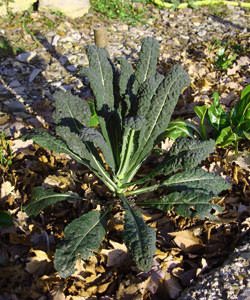
Courtesy RUAF
In the Urban Agriculture course on policy-making at Ryerson University, students will review a case study about urban agriculture in Freetown, Sierra Leone.
The United Nations Development Program estimates there are 800 million residents worldwide who participate in urban agriculture. In developing countries, urban farming is an important survival technique that provides families with nutritious food and a source of income. In more developed urban environments, green movements, struggling economies and nutritional concerns have been the main catalysts for the urban farming movement. A common factor within all these motivations for urban dwellers to grow their own food is the security that harvests provide the farmer.
Ryerson University in Toronto is merging the link between food security and urban agriculture with its new Urban Agriculture concentration offered to participants in their Food Security program. The university is also offering an Urban Agriculture concentrated postgraduate-degree certificate in Food Security to those who complete the corresponding Urban Agriculture course series.
“I think it is important to see urban agriculture as part of a series of activities that need to be undertaken to alleviate food insecurity and create healthy local food systems,” says Reg Noble, the academic coordinator of the Food Security program.
The certificate program has been developed in partnership with G. Raymond Chang School of Continuing Education, Ryerson’s School of Nutrition, and the Resource Centres on Urban Agriculture and Food Security (RUAF) in the Netherlands, a global leader in urban agriculture research and development. Ryerson’s Center for Studies in Food Security has defined food security through five characteristics: availability (sufficient amounts), accessibility (constant physical and economic access), adequacy (food sources that are nutritious, safe and produced in an environmentally sustainable way), acceptability (available food that is culturally accepted), and agency (policies and processes should promote food security).
To attain a concentration in Urban Agriculture from the Food Security program, students must participate in four elective online courses that encompass the technical aspects of urban agriculture and the governmental policies that influence them. The program stresses the importance of urban agriculture as a means to develop sustainable, food-secure and healthy urban environments.
“In our food security certificate program, which includes the urban agriculture course series, our objective is to explore how to create economically and ecologically sustainable food systems that provide safe and healthy food and, in particular, systems which are based on social justice and democratic decision-making,” says Noble.
With the majority of the world’s population migrating to urban landscapes, widespread food crises, climate change and vast conglomerations controlling major portions of the world’s food supply, the emphasis on urban agriculture brings many solutions to looming food-security concerns. The instructors have a diverse range of expertise in the realm of food security ranging from human nutrition, developing food systems resilience models, environmental studies, gender studies relating to agriculture and sustainability, biotechnology, international development, and government policy, initiatives and programs.
Because the courses are offered remotely, those outside Toronto and the university can enroll in the coursework. Students who achieve a cumulative GPA of 2.0 or above and complete six online food-security courses, choosing four elective courses pertaining to urban agriculture, receive Food Security certifications with an Urban Agriculture concentration from Ryerson. The university accepts post-graduate applicants (those who hold a bachelor’s degree in any field) who have maintained a minimum 2.0 GPA. Also, non-degree holders with at least five years of relevant work experience can receive admittance to the program upon the approval of an academic advisor at the university.
“It is important to realize that policy and actions taken over many sectors in our societies affect our food systems, either directly or indirectly, and subsequently impacts people’s ability to be food secure and the health of our environment,” Noble says. “Our course is intended to raise awareness of these connections and provide practical skills and knowledge to ensure that society can work toward transforming our currently flawed food systems to ones that will ensure our food security now and for future generations.”
















